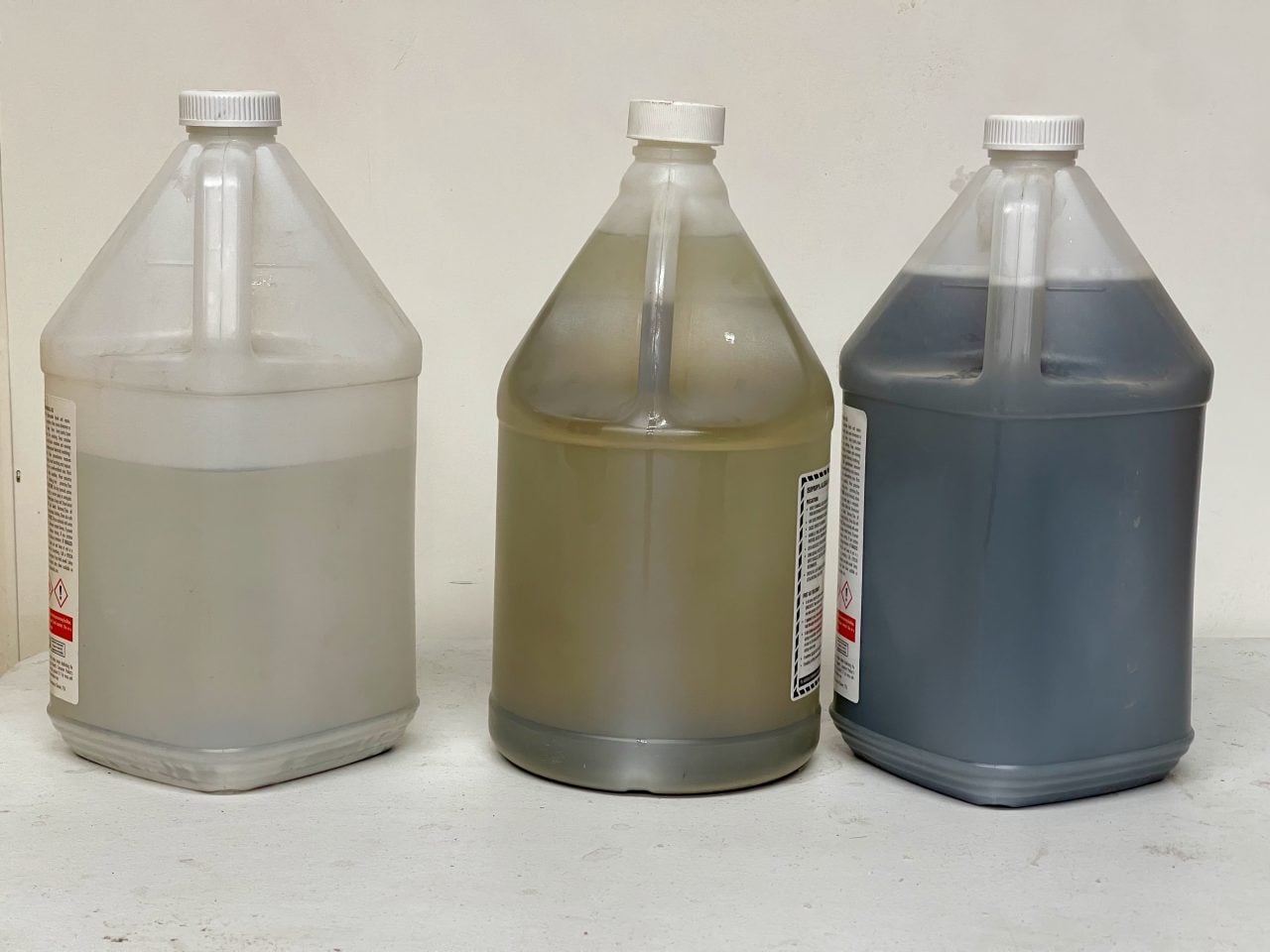
It’s time to talk about water-washable 3D printer resin.
Washing is a critical step in the resin 3D printing process. Parts emerge from the printer “wet” with liquid, unsolidified resin all over their surfaces. This material must be removed before the UV curing stage, otherwise those drips become part of the object.
Removal, or “washing”, is always done with a solvent that can disperse the resin. Traditionally this has been common IPA, usually 91% or better. The resin is pulled off the part and dissolves into the IPA, which gets increasingly “dirty” as more parts are processed. Sometimes a second “clean” wash is required.
Eventually the IPA is so dirty that it must be dealt with. Normally this is done by letting the IPA evaporate quickly into the air, which is what IPA does. As it evaporates, the still-toxic resin remains in the container. Eventually the residue is exposed to sunlight, where it cures into solid form. This can then be safely disposed of in the usual manner.
However, resin is almost always toxic, and IPA isn’t particularly safe either. It’s not something you want to be breathing in, and it is actually quite flammable. Wouldn’t it be terrific if there was a solvent that was a bit more friendly?
Some years ago someone came up with the idea of “water washable resin”. At first, this sounds pretty good: you don’t need nasty IPA and can use just water. Also, “water washable” sounds pretty friendly — does that mean the resin is safer, too?
Absolutely not.
Water washable resin contains the same nasty toxins found in regular IPA-style resin. It’s just that plain water can be used to rinse wet resin off printed parts. The idea that water washable resin is safer than regular resin just isn’t true, even though the product naming might suggest that’s the case.
But we do avoid the use of IPA, which should be safer, right?
Yes, there are some advantages:
- Water doesn’t catch on fire
- Water is less expensive than IPA
Note that I don’t say it’s “safer”. That’s because after you rinse a part in the water, that water is now contaminated with toxic 3D printer resin. It’s no longer safe. You cannot touch it. You have to dispose of the dirty water in the same way you have to dispose of dirty IPA.
Because of this, the safe handling procedures when using water washable resin are no different than using IPA. PPE required, no touch, cover the water to avoid evaporating resin in the air, etc.
There’s a new problem that’s introduced, however. When disposing of dirty IPA it is fairly straightforward because IPA evaporates very quickly in the air. Water evaporates at a much slower rate, especially when mixed with resin. This means that you will find yourself with a quantity of toxic water that is less easily dealt with. It takes longer for resin-infused water to evaporate and solidify for disposal.
Because of all these factors, I really wonder why anyone would want to use water washable resin. The choice of resins is far narrower, it’s not any safer and it’s the same or harder to process than IPA. The only advantages seem to be flammability and water is a bit less expensive than IPA.
The cost of IPA isn’t particularly high, and it’s even possible to recycle IPA by letting the resin settle out and exposing the IPA in a covered jar to sunlight.
If anyone has a reason to use water washable 3D printer resin, please let me know.
